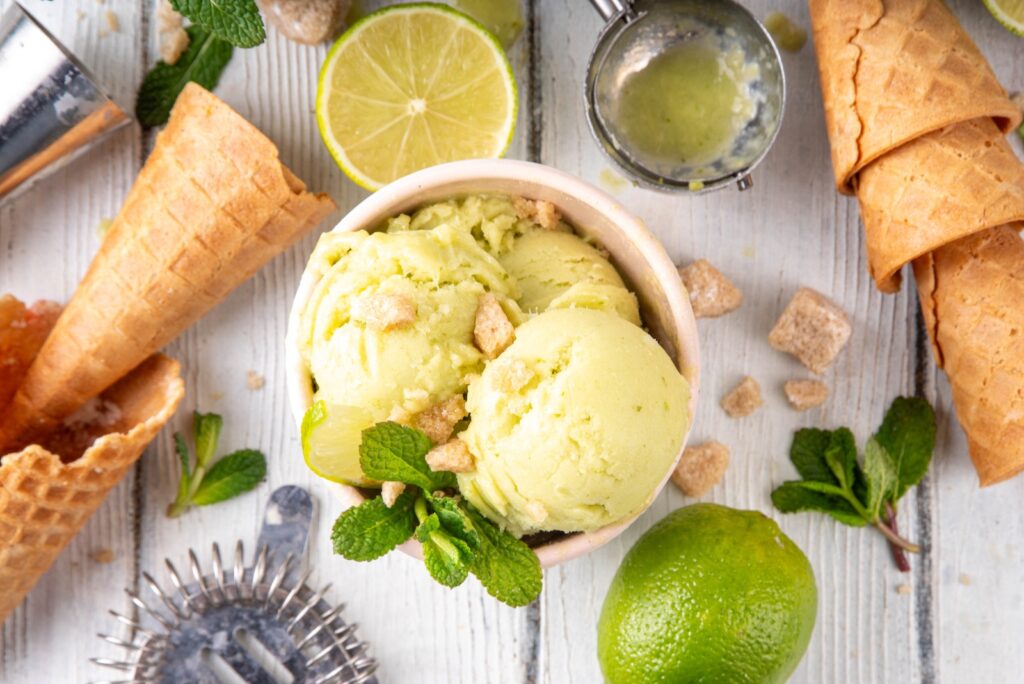Gelato vs. Ice Cream: Key Differences in Texture, Flavor, and Nutrition
Whether you’re cooling down on a hot Abu Dhabi afternoon or treating yourself after dinner, the choice between gelato and ice cream can shape your dessert experience. Both frozen delights share similar ingredients but differ in important ways—from how they’re made to how they taste and even how they fit into a balanced diet. This guide will explore the key differences in texture, flavor, and nutrition, helping you pick the perfect scoop for any occasion.
🍨 Origins and Definitions
- Ice Cream traditionally consists of milk, heavy cream, sugar, and often egg yolks, churned rapidly to incorporate air.
- Gelato, meaning “frozen” in Italian, relies mostly on milk with a smaller proportion of cream, minimal or no egg, and is churned slowly to limit air.
Both are served cold, but gelato is stored and enjoyed at a slightly warmer temperature than ice cream, resulting in unique eating characteristics.
🥄 Texture: Air Content and Mouthfeel
Overrun (Air Incorporation)
- Ice Cream can have up to 50%–100% overrun, meaning its volume doubles from air whipped in during churning. This produces a lighter, fluffier end product.
- Gelato typically has only 20%–30% overrun, leading to a denser, silkier texture.
Mouthfeel
- The high air content in ice cream gives a soft, pillowy feel on the tongue.
- Gelato’s low overrun makes it feel richer and more substantial, promoting a gradual melt that keeps flavors concentrated longer.
In the UAE’s warm climate, a dense gelato can provide sustained refreshment without rushing through your scoop.
🌡 Serving Temperature: Soft vs. Firm
- Ice Cream is best enjoyed at around –18 °C to –20 °C, keeping it firm and scoopable.
- Gelato is served warmer, around –10 °C to –12 °C, making it softer and more pliable.
A slightly warmer gelato releases aroma compounds faster, so you taste the full complexity immediately. Ice cream’s colder temperature can mask subtle notes until the initial chill subsides.
🍓 Flavor Intensity and Ingredient Balance
Fat Content
- Ice cream’s higher fat (often 10%–20%) carries flavor compounds but can also coat the tongue, sometimes muting delicate tastes.
- Gelato’s lower fat (4%–8%) lets fruit, nut, or chocolate flavors shine more brightly.
Ingredient Ratios
- In ice cream, the balance of cream and sugar is calibrated for smoothness at very low temperatures.
- Gelato uses more milk and less sugar relative to ice cream, optimizing for flavor concentration at warmer serving temps.
As a result, a small portion of gelato often tastes more flavorful than an equivalent scoop of ice cream.
⚖️ Nutritional Profile: Calories, Fat, and Sugar
Understanding the nutritional differences can guide healthy choices without giving up dessert entirely.
| Component | Ice Cream (per 100 g) | Gelato (per 100 g) |
|---|---|---|
| Calories | ~200–250 kcal | ~150–180 kcal |
| Total Fat | ~10–20 g | ~4–8 g |
| Saturated Fat | ~6–12 g | ~2–4 g |
| Total Sugar | ~20–25 g | ~18–22 g |
| Protein | ~3–5 g | ~3 g |
- Calories: Gelato typically contains 10–20% fewer calories due to its lower fat content.
- Fat: With less heavy cream, gelato reduces saturated fat by nearly half.
- Sugar: Both rely on sugar for sweetness and softness, but gelato’s slightly lower sugar content can be beneficial for those monitoring intake.
These figures can vary based on recipe and added mix-ins (fruit purees, nuts, or chocolate chips), so always check nutrition information when available.
🥝 Diet Considerations: Wellness-Friendly Options
For health-conscious dessert lovers, both frozen treats offer pathways to smarter choices:
- Fruit-Based Sorbets: Essentially dairy-free gelatos made with fruit, water, and sugar—ideal for vegan or lactose-intolerant diets.
- Reduced-Fat Ice Creams: Many brands offer versions with lighter cream or added air to cut fat and calories.
- Dairy Alternatives: Both gelato and ice cream can be crafted with plant-based milks (almond, coconut, oat) to cater to varied dietary needs.
- Portion Control: Gelato’s intense flavor and dense texture encourage smaller servings, naturally reducing calorie intake.
In the UAE, many gelaterias and ice cream shops now highlight nutrition information, making it easier to balance enjoyment with wellness goals.
🍦 Portion Size and Satisfaction
Because gelato is denser and more flavor-packed per gram, you often need less to feel satisfied. A modest 80 g serving of gelato can deliver the same taste experience as 100 g or more of airier ice cream. This built-in portion control can help manage overall caloric intake without sacrificing pleasure.
🌍 Cultural Context in the UAE
Frozen desserts are a staple of UAE hospitality and lifestyle:
- Ice Cream is ubiquitous in supermarkets and casual cafés, often featuring bold mix-ins like chocolate chunks or cookie dough.
- Gelato appears in artisanal shops, food markets, and luxury hotels, aligning with a growing appreciation for handcrafted, authentic experiences.
In warmer outdoor settings—beach promenades, night markets, or shopping festivals—gelato’s slower melt and concentrated taste make it a popular choice for both residents and visitors.
🎨 Flavor Innovations and Trends
Both gelato and ice cream continue to evolve with creative flavor profiles:
- Ice Cream Trends: Swirls of salted caramel, brownie bites, and novelty cones.
- Gelato Trends: Local infusions (date and saffron), botanical flavors (rose, lavender), and seasonal fruit sorbets.
Nutrition-driven options such as lower-sugar, high-protein, or functional ingredients (probiotics, collagen) are emerging in both categories.
🔄 Making Your Choice
Choosing between gelato and ice cream boils down to what you prioritize:
- Texture & Flavor: Opt for gelato when you want an intense, creamy hit.
- Cool Firmness & Variety: Choose ice cream for a wide array of mix-ins and a colder bite.
- Nutrition Goals: Gelato generally offers a lighter profile, but both can be tailored to dietary needs.
Experimenting with small tastes of each can help you discover your personal preference under Abu Dhabi’s sunny skies.
🌟 Final Scoop
Gelato and ice cream share a common heritage but diverge in texture, flavor intensity, and nutritional makeup. In the UAE’s dynamic food scene, both frozen treats have earned devoted followings—gelato for its artisanal quality and dense, flavorful profile; ice cream for its comforting creaminess and creative mix-ins. By understanding their differences, you can make informed choices that satisfy both your taste buds and health ambitions.

